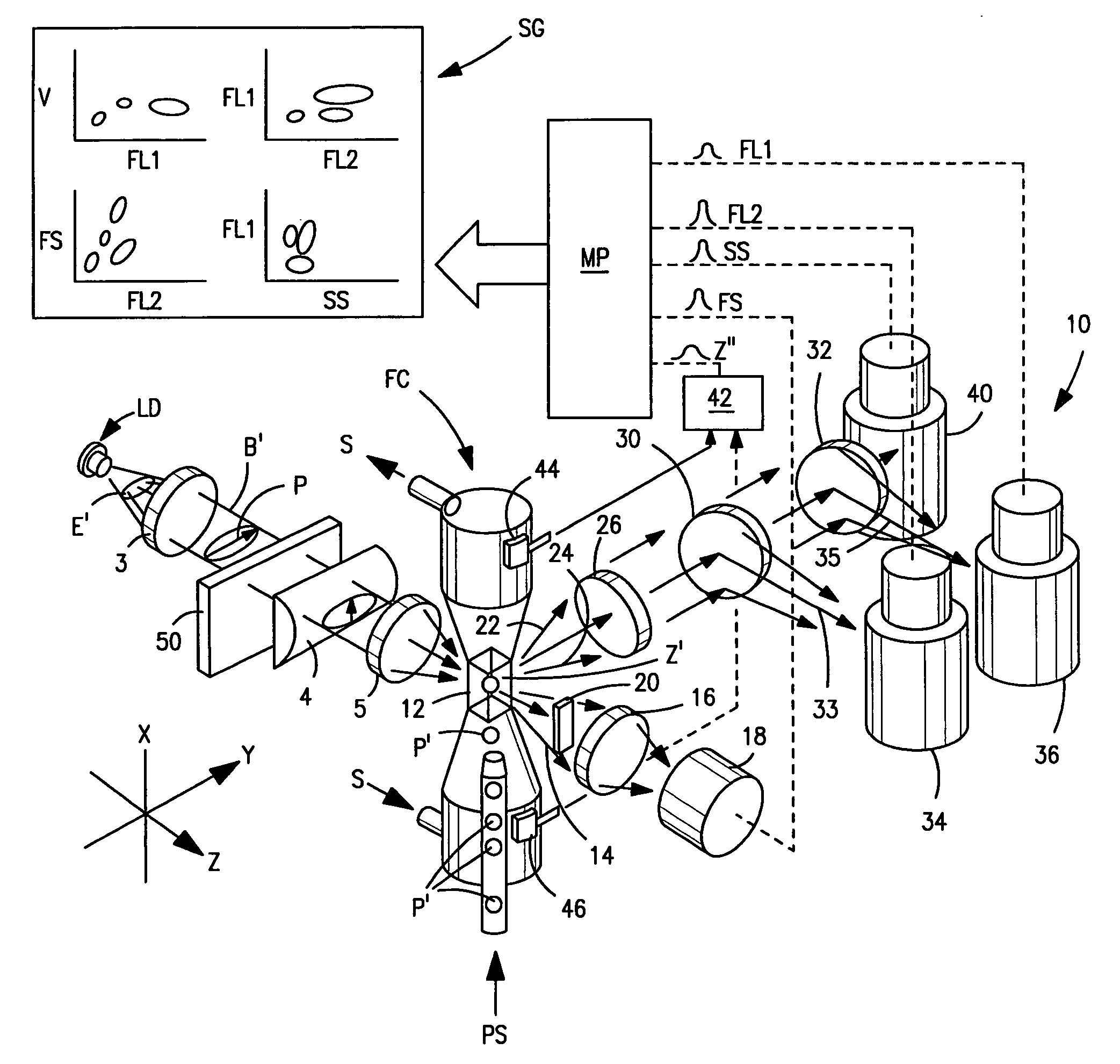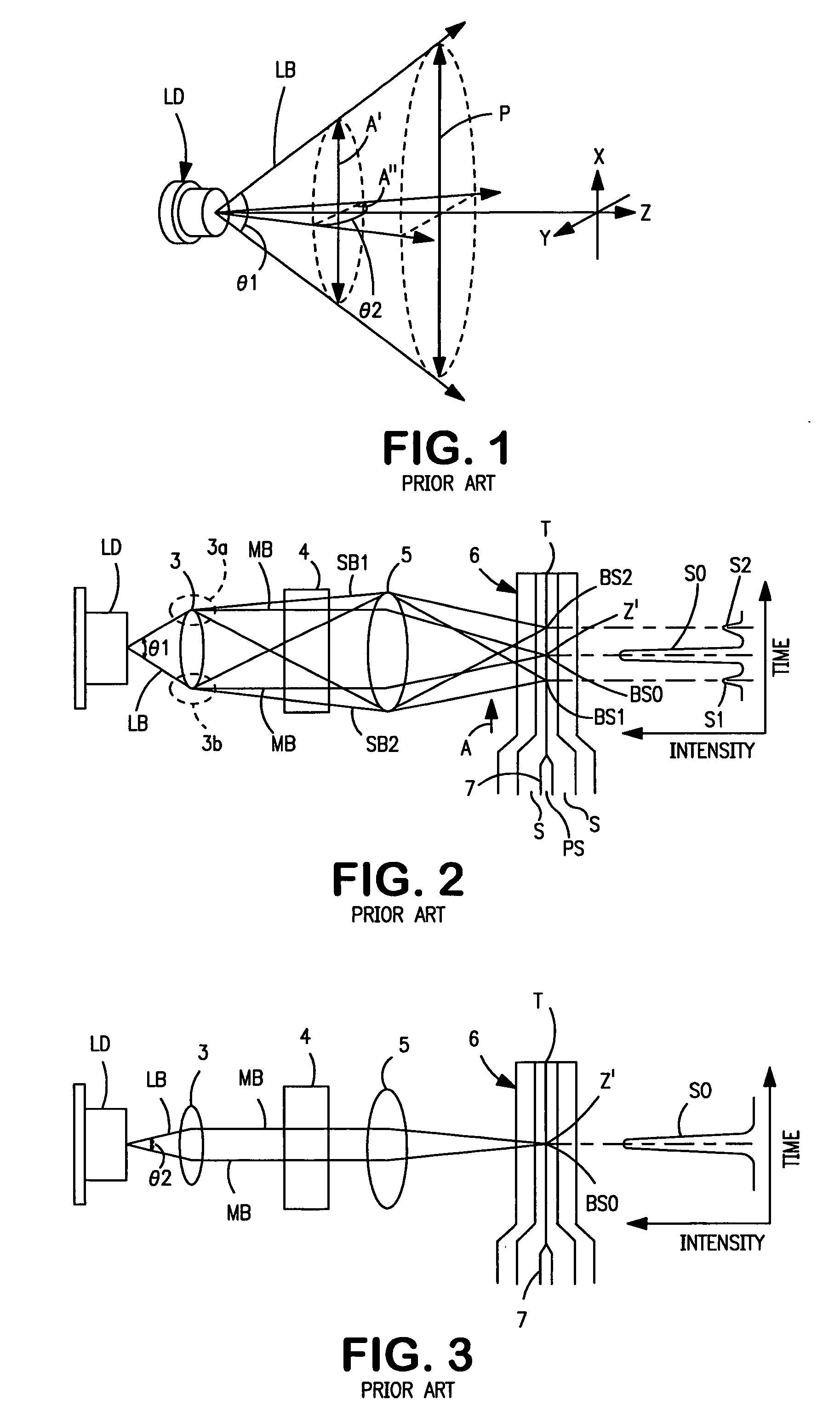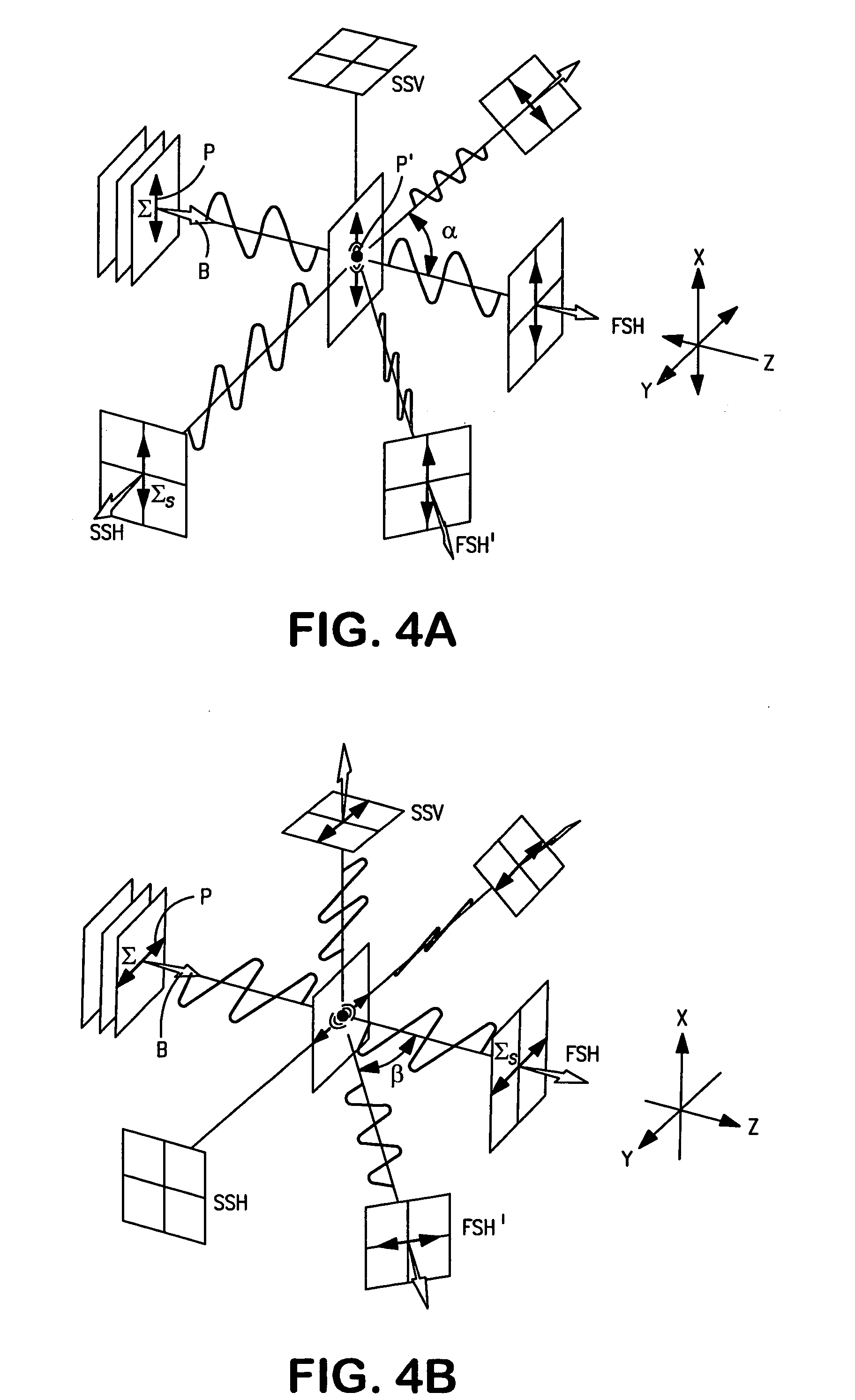Flow cytometer for differentiating small particles in suspension
a flow cytometer and suspension technology, applied in the direction of optical radiation measurement, instruments, spectrometry/spectrophotometry/monochromators, etc., can solve the problems of truncating a portion of the beam divergence, affecting the performance of flow cytometers, and affecting the ability to detect side-scattered radiation
- Summary
- Abstract
- Description
- Claims
- Application Information
AI Technical Summary
Problems solved by technology
Method used
Image
Examples
Embodiment Construction
[0016] Referring now to the drawings, FIG. 1 schematically illustrates a conventional laser diode LD of the type that emits a diverging laser beam LB having an elliptical cross-section that expands in size in accordance with two different angles of divergence, θ1 and θ2. As illustrated, these angles are measured in mutually perpendicular planes, and one angle, in this case angle θ1, is usually substantially larger than the other. As is characteristic of laser diodes, the emitted laser beam LB will be plane-polarized in a plane P that is parallel to the major axis A′ of the expanding elliptical cross-section of the beam. The minor axis A″ of the elliptical cross-section is, of course, perpendicular to the major axis A′.
[0017] In FIG. 2, the laser diode LD of FIG. 1 is shown as being embodied in a flow cytometer of the earlier type described above. A particle sample PS containing particles to be analyzed, e.g., blood cells, is introduced by a nozzle 7 into an optically-transparent fl...
PUM
| Property | Measurement | Unit |
|---|---|---|
| angle of divergence | aaaaa | aaaaa |
| angle of divergence | aaaaa | aaaaa |
| angle | aaaaa | aaaaa |
Abstract
Description
Claims
Application Information
 Login to View More
Login to View More - R&D
- Intellectual Property
- Life Sciences
- Materials
- Tech Scout
- Unparalleled Data Quality
- Higher Quality Content
- 60% Fewer Hallucinations
Browse by: Latest US Patents, China's latest patents, Technical Efficacy Thesaurus, Application Domain, Technology Topic, Popular Technical Reports.
© 2025 PatSnap. All rights reserved.Legal|Privacy policy|Modern Slavery Act Transparency Statement|Sitemap|About US| Contact US: help@patsnap.com



